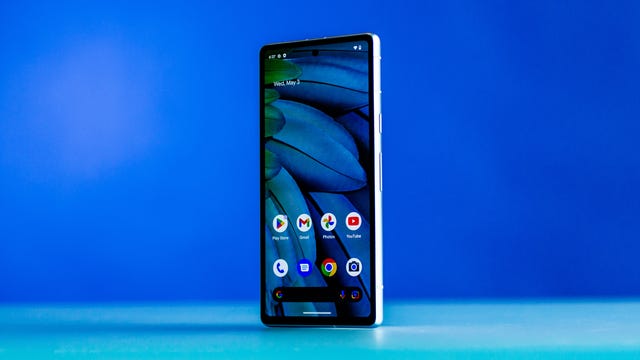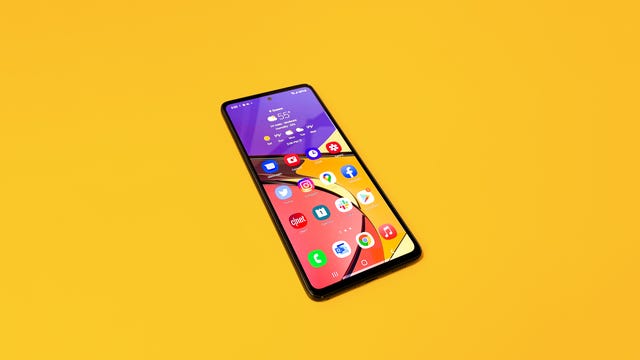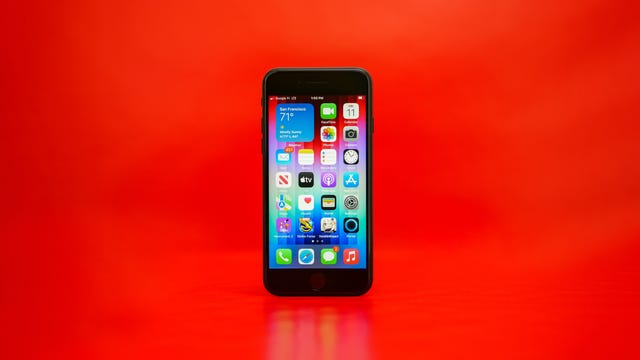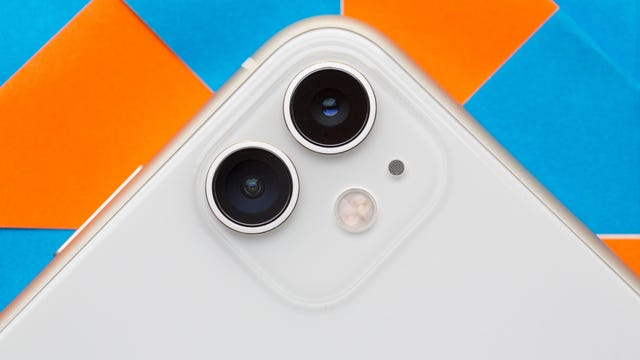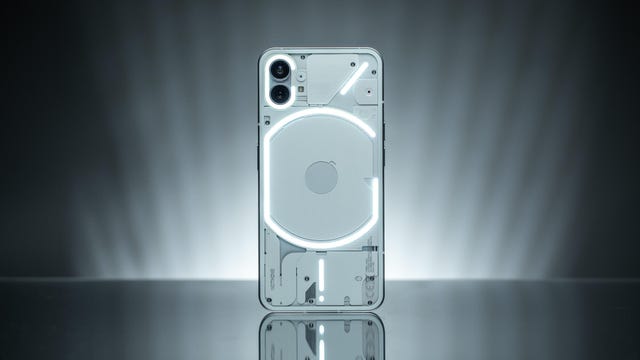Technologies
Best Phone Under $500 for 2023: New Features at Lower Prices
Our latest best phone under $500 is so close to its more expensive sibling, there’s no reason to pay more for it.

In this article:
The best phones under $500 include so many features that you want to see in an excellent phone, with sacrifices that you might not even notice. These are phones that include displays with high refresh rates, modern chips, good cameras and 5G. They even get several years of software and security updates.
These phones do make cuts that justify why they’re cheaper than phones that cost more than $500, but those cuts are increasingly in areas that might not raise any particular flag when you just want a reliable device. Apple’s iPhone SE along with Google’s Pixel 6A and 7A phones, for instance, have a smaller screen, but all run on newer processors and software. Samsung’s Galaxy A series of phones often look just like the Galaxy S line, but instead run on a less powerful processor. And the Moto G Stylus 5G takes nice photos, provides a roomy 256GB of space and throws in a stylus, but Motorola doesn’t provide software support for as long as its competitors.
Photography and video in particular are areas where the phones in this price bracket take a noticeable hit in comparison to their more expensive counterparts. However, photo-processing software should help pick up some of the slack. For instance, while the iPhone SE has a single 12-megapixel camera that doesn’t support night photography, its A15 Bionic chip does allow for Apple’s Deep Fusion processing. It’s a similar situation for the Pixel 6A, which uses a 12-megapixel main camera and a 12-megapixel ultrawide camera, yet can enhance those photos with processing powered by the phone’s Tensor chip. However the new Pixel 7A offers a 64-megapixel main camera, which some might consider an upgrade from the Pixel 7’s 50-megapixel main camera.
Advertiser Disclosure
You can see the pros and cons of each of these phones below, with more details available in our full reviews.
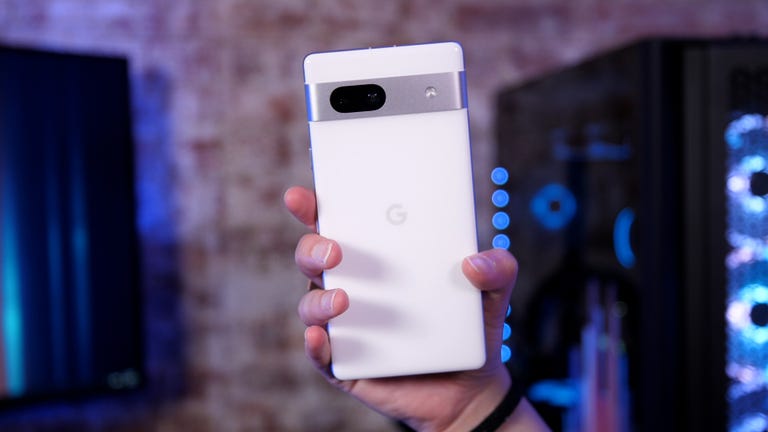
07:15
What is the best phone under $500?
Google’s $499 Pixel 7A compares so closely to the $599 Pixel 7, that it’s now tough to recommend the more expensive option. The Pixel 7A includes the same Tensor G2 processor that powers Google’s Pixel-exclusive features, gets wireless charging, a 90Hz refresh rate and a 64-megapixel main camera paired up with a 13-megapixel ultrawide camera. My colleague Lisa Eadicicco said that the Pixel 7A does miss out on the Pixel 7’s battery share feature, the camera’s Action Pan mode and slightly faster charging, but none of those features feel like a major omission.
And if you want to save even more money, last year’s Pixel 6A has received a permanent price drop to $349 and still has a lot to offer. It runs on the Tensor chip, includes many of the same Pixel features like Real Tone for photography and Hold for Me for phone calls and takes crisp and colorful photos for a phone of its price. This is especially true when it gets discounted to $299, which it often is, making it the best phone for under $300 as long as it’s on sale.
Best phones under $500
Google’s budget phone took a leap forward in 2023 with the Pixel 7A, which offers many of the same benefits as the Pixel 7 but at a cheaper price. Like the Pixel 7, the Pixel 7A runs on Google’s Tensor G2 processor, meaning it has many of the same photo editing and language translation features as its pricier sibling. The Pixel 7A’s 64-megapixel camera also takes excellent photos that rival the Pixel 7’s in quality.
While we still like the Pixel 7, the Pixel 7A’s lower price makes it a better deal for most people. Only opt for the Pixel 7 if you really want a slightly larger screen and are willing to pay the extra $100 for it. Otherwise, the main differences between the Pixel 7 and 7A come down to the former’s more durable build, slightly faster charging and its ability to wirelessly charge compatible accessories. The Pixel 7 also has a larger camera sensor that’s more sensitive to light, according to Google, but CNET’s Lisa Eadicicco didn’t notice much of a difference.
The Pixel 6A is still available, and at its permanently discounted price of $349, it still has a lot to offer. CNET’s Lisa Eadicicco said in her Pixel 6A review that the phone includes many of the Pixel 6’s best features, and that remains the case even as the Pixel 7A hits the market at $499.
The phone is slightly smaller than the Pixel 6, featuring a 6.1-inch OLED display and a refresh rate of 60Hz. And while it has a 12.2-megapixel main camera and a 12-megapixel ultrawide camera, photos taken look quite good using Google’s photo processing software. Pictures can benefit from its Real Tone skin tone feature, Face Unblur, Night Sight for darker photography and the Magic Eraser for removing unwanted elements from a photo.
The Samsung Galaxy A53 includes many of the best features seen in the Galaxy S22 line, with a few tradeoffs to hit that lower price. The phone includes a 6.5-inch AMOLED screen with a 2,400×1,080-pixel resolution, 5G support and a long-lasting 5,000-mAh battery. The phone also comes with a 64-megapixel main camera, 12-megapixel ultrawide camera, 5-megapixel macro camera and 5-megapixel depth camera.
But a particular high point for this phone is Samsung’s pledge to provide four years of software support, in addition to shipping with Android 12 with Samsung’s One UI 4.1. However, Samsung just announced a new version of this phone, called the Galaxy A54 5G, which we’re looking forward to testing soon.
The $429 iPhone SE is a mix of an older design with the latest smartphone features, including Apple’s A15 Bionic chip and 5G support. It’s also one of the few phones on the market that includes a smaller, 4.7-inch screen.
It’s that throwback design, which continues the general shape that Apple has used since 2014, that could be what you love or dislike most about this phone. If you want a larger iPhone in this price range, you can also consider the iPhone 11, and get a bigger screen and Face ID. But that phone does not include 5G connectivity.
The phone also only includes one 12-megapixel main camera, which does not support night mode. Most other phones in this roundup include multiple cameras and features like night mode, making the omission noticeable. However, photos make up for this by including the Deep Fusion photo-processing technique to enhance medium-to-low light photos, and Smart HDR4 processing for improving color and contrast. CNET Managing Editor Patrick Holland did find that video shot in 4K resolution at 60 frames per second is particularly good on the iPhone SE, but it will not include the Cinematic Mode seen on the iPhone 13.
The $500 Moto G Stylus 5G (2022) is one of the best stylus-equipped phones you can get right now, especially for the price. You get Android 12, 5G connectivity, a large 6.8-inch screen and a spacious 256GB of storage. Unfortunately, the phone is only promised one software update and three years of security updates, which is a much shorter timeline than the four years promised by Samsung for the Galaxy A53.
Yet if you want a stylus-equipped phone, the next step-up option is the substantially more expensive Galaxy S22 Ultra at $1,200.
With the launch of the iPhone 14 series, Apple discontinued the $500 iPhone 11, but it’s still widely available. It might be a few generations old, but this phone is still more than capable, handling gaming well and equipped with two superb rear cameras. It is missing 5G support, which is increasingly improving as wireless carriers invest in the network, but the phone will work fine on LTE and Wi-Fi. The iPhone 11 also does not support MagSafe accessories, which were introduced alongside the iPhone 12.
Just note that some places may be selling refurbished versions of the phone since Apple itself is no longer selling new iPhone 11 models. Best Buy does not carry any unlocked models, so you’ll have to sign up for a service plan through either AT&T, Verizon, T-Mobile or Sprint.
The Nothing Phone 1 is technically available in the US for $299, but only through a beta program that is selling an international model with limited US carrier compatibility. While the company does plan to officially launch a future phone for the North American market, this phone is still worth a look in countries where it’s available. It offers a striking design and decent specs for the money, even at its higher £399 UK price (which converts to roughly AU$700).
The Nothing Phone 1 is adorned with LED strips on the back, each of which is called a «glyph,» that light up for alerts and notifications. That design is accompanied by two 50-megapixel cameras: a wide angle and an ultrawide. Around the front is a 6.55-inch 120Hz display with a 2,400-by-1,080-pixel resolution and a 16-megapixel selfie camera. The phone runs on a Snapdragon 778G Plus chip, with models that start with 8GB of memory and 128GB of storage.
All that amounts to a phone that compares well within the price range, especially given its camera quality and looks.
How we test phones
Every phone on this list has been thoroughly tested by CNET’s expert reviews team. We actually use the phone, test the features, play games and take photos. We assess any marketing promises that a company makes about its phones. And if we find something we don’t like, be it battery life or build quality, we tell you all about it.
We examine every aspect of a phone during testing:
- Display
- Design and feel
- Processor performance
- Battery life
- Camera quality
- Features
We test all of a phone’s cameras (both front and back) in a variety of conditions: from outdoors under sunlight to dimmer indoor locales and night time scenes (for any available night modes). We also compare our findings against similarly priced models. We have a series of real world battery tests to see how long a phone lasts under everyday use.
We take into account additional phone features like 5G, fingerprint and face readers, styluses, fast charging, foldable displays and other useful extras. And we, of course, weigh all of our experiences and testing against the price so you know whether a phone represents good value or not.
Read more: How we test phones
Phones under $500 comparison
Samsung Galaxy A53 5G vs. Motorola Moto G Stylus 5G vs. Google Pixel 6A vs. Apple iPhone SE (2022) vs. Nothing Phone 1 vs. Apple iPhone 11
| Samsung Galaxy A53 5G | Motorola Moto G Stylus 5G (2022) | Google Pixel 6A | Apple iPhone SE (2022) | Nothing Phone 1 | iPhone 11 | |
|---|---|---|---|---|---|---|
| Display size, resolution | 6.5-inch AMOLED (2,400×1,080 pixels); 120 Hz | 6.8-inch LTPS LCD FHD+; 2,460 x1,080 pixels; 120 Hz | 6.1-inch OLED; (1080 x 2400); 60Hz | 4.7-inch LCD; (1,334×750 pixels); 60 Hz | 6.55-inch OLED display,2,400 x1080 pixels; | 6.1-inch LCD Liquid Retina; 1,792×828 pixels |
| Pixel density | 405ppi | TBD | 429 ppi | 326ppi | 402ppi | 326ppi |
| Dimensions (inches) | 6.28 x 2.94 x 0.32 in. | 6.65 x 2.98 x 0.37 in. | 6.0 x 2.8 x 0.35 in. | 5.45 x 2.65 x 0.29 in. | 5.94×2.98×0.33 in. | |
| Dimensions (millimeters) | 159.6 x 74.8 x 8.1 mm | 168.9 x 75.8 x 9.3 mm | 152.2 x 7.18 x 8.9 mm | 138.4 x 67.3 x 7.3 mm | 159.2 x 75.8 x 8.3 mm | 150.9×75.7×8.3 mm |
| Weight (ounces, grams) | 6.67 oz.; 189g | 7.58 oz.; 215 g | 6.3 oz.; 178g | 5.09 oz.; 144g | 193.5g | 6.84 oz.; 194g |
| Mobile software | Android 12 | Android 12 | Android 12 | iOS 15 | Android 13 | iOS 13 |
| Camera | 64-megapixel (wide), 12-megapixel (ultra-wide), 5-megapixel (macro), 5-megapixel (depth) | 50-megapixel (wide), 8-megapixel (ultrawide/macro), 2-megapixel (depth) | 12.2-megapixel (wide), 12-megapixel ultra wide) | 12-megapixel (wide) | 50-megapixel (main), 50-megapixel (ultra-wide) | 12-megapixel (wide), 12-megapixel (ultra-wide) |
| Front-facing camera | 32-megapixel | 16-megapixel | 8-megapixel | 7-megapixel | 16-megapixel | 12-megapixel with Face ID |
| Video capture | 4K | 1,080p | 4K | 4K | 4K at 60fps | 4K |
| Processor | Exynos 1280 | Snapdragon 695 5G | Google Tensor | Apple A15 Bionic | Snapdragon 778G+ | Apple A13 Bionic |
| RAM/Storage | 6GB/128GB | 8GB/256GB | 6GB RAM/128GB storage | 64GB, 128GB, 256GB | 8GB + 128GB, 8GB + 256 GB, 12GB RAM + 256GB | 64GB, 128GB, 256GB |
| Expandable storage | Up to 1TB | Up to 1TB | None | NA | None | None |
| Battery/Charger | 5,000 mAh (charger not included, does not support wireless charging) | 5,000 mAh (10W wired charger included) | 4,410 mAh capacity; 18-watt fast charging (adapter sold separately) | Battery NA (20W wired charging — charger not included), 7.5W wireless charging) | 4,500 mAh (33W wired charging, 15W wireless charging, 5W reverse charging) | Not disclosed, but Apple claims it will last 1 hour longer than iPhone XR |
| Fingerprint sensor | In-display | Side | Under display | Home button | In-display | None (Face ID) |
| Connector | USB-C | USB-C | USB C | Lightning | USB-C | Lightning |
| Headphone jack | None | Yes | None | None | None | No |
| Special features | 5G-enabled; IP67 rating; supports 25W wired fast charging, Samsung Pay | 5G-enabled; OIS for main camera; NFC for Google Pay; | 5G-enabled, 18W fast charging, Wi-Fi 6E, security updates for 5 years, Android OS updates for 3 years, dual SIM, IP67 water resistance | 5G-enabled; supports 25W wired fast charging; Water resistant (IP67); dual-SIM capabilities (nano-SIM and e-SIM); wireless charging | 5G, IP53, Three years of Android updates, Dual Sim, 120Hz adaptive refresh rate | Water resistant (IP68); dual-SIM capabilities (nano-SIM and e-SIM); wireless charging |
| Price off-contract (USD) | $450 | $500 | $449 | $399 (64GB), $449 (128GB), $549 (256GB) | N/A | $499 |
| Price (GBP) | £399 | NA but converts to £405 | £399 | £419 (64GB), £469 (128GB), £569 (256GB) | £399 | £489 |
| Price (AUD) | AU$699 | NA but converts to AU$715 | A$749 | AU$749 (64GB), AU$829 (128GB), AU$999 (256GB) | N/A | AU$849 |
Phones under $500 FAQs
Are cheaper phones worth it?
For many people, a phone that costs less than $500 will likely have everything you need for communication, photography and entertainment. In some cases, the phones even provide some of the latest features seen on higher-end phones like smooth 120Hz refresh rates and multiple cameras.
However, you should be aware of — and OK with — the limitations a phone may have compared to its more expensive counterparts. For instance, if you want an iPhone with a bigger screen than the iPhone SE and iPhone 11’s screens, your next best option is the $899 iPhone 14 Plus. That’s far outside the $500 price range, but you also get additional benefits like an improved camera.
On the other hand, if you want a phone with a bigger screen and if running Android is fine, you’ll have plenty of options that are under $500.
Can you get a good camera on a cheaper phone?
Yes, you can find several cheaper phones that take great photos, whether it’s through the camera available on the device, photo processing software on the phone or — is most often the case — a combination of both.
Apple’s iPhone SE includes the A15 Bionic chip, which supports Smart HDR4 processing and Apple’s Deep Fusion processing. Smart HDR4 helps with improving color and contrast, while the Deep Fusion processing helps with medium- to low-light environments. CNET Managing Editor Patrick Holland put together a sampling of photos and videos taken on the phone during his review, which can be watched on the CNET Highlights YouTube channel. However, the iPhone SE also has only one 12-megapixel camera, and that camera does not support night photography.
Over on the Android side, the Google Pixel 6A includes the company’s Tensor chip, which brings photography features like Real Tone for capturing more accurate skin tones, Face Unblur for fixing a person’s face and Magic Eraser for removing unwanted objects. But it has a 12-megapixel main camera paired up with a 12-megapixel ultrawide camera, which takes good photos but is a clear step down from the 50-megapixel main camera seen on the Pixel 6 and Pixel 7.
Samsung’s Galaxy A53 is an interesting case: Iit has a main 64-megapixel camera alongside a 12-megapixel ultrawide, 5-megapixel macro camera and 5-megapixel depth camera. While that’s more megapixels than the 50-megapixel main camera on the Galaxy S22, the image detail is a step down with the S22 able to produce photos with better contrast and sharpness.
What makes these phones cheaper?
Each company takes a different approach toward cheaper phones.
The iPhone SE, for example, has a recent Apple processor packed inside an otherwise dated phone design. Google’s Pixel 6A likewise includes the new Tensor processor, but uses an older 12.2-megapixel main camera instead of the 50-megapixel main camera found on the $599 Pixel 6.
Samsung’s Galaxy A53 takes the opposite approach. It includes a processor that’s slower than the Galaxy S22’s but includes other modern features like a screen with a high refresh rate.
More phone advice
- Best Android Phone for 2023
- Best MagSafe Accessories for the iPhone
- Best Prepaid Phones for 2023
- Samsung’s Galaxy Phones: Which Should You Buy?
- SIM Card Swap Fraud: What It Is and How to Prevent It
- Best Cheap Phones Under $200: Top Picks and New Budget Phones
- Best iPhone Fast Charger for 2023
- Best iPhone for 2023: Which of Apple’s 8 Phones is Right for You?
Technologies
We’ve Found the Coolest, Most Futuristic Tech at CES 2026. And the Show Just Started
We’ve already had a day to trawl for our favorite cutting-edge technology. Neat stuff abounds!

We have people all over the show floor and beyond at CES, searching for the most interesting, innovative and cutting-edge tech available. A ton of useful new information is also available, which you can find on our CES 2026 live blog and in our CES hub.
The show floor opened Tuesday, and we had a lot of preview time beforehand to gawk at some CES staples, such as robots, electronic toys, phones and more. I’ll be back here to top off our fun finds regularly throughout the show.
Technologies
Grab This Tariff-Busting Xbox Series X Deal and Save $44 While You Can
You can bag a 1TB Xbox Series X for just $606, but act fast, since we don’t know how long this deal will last.

Ever since tariffs and other economic uncertainty led to Xbox price increases in late 2025, things have gotten expensive. A 1TB Xbox Series X now sells for $50 more than it used to, and there is little sign of these prices improving anytime soon.
Thankfully, every so often, a deal pops up that helps make things a little more affordable like this Walmart discount that slashes that same Series X to just $606. The catch? Well, there isn’t one. But we don’t expect this deal to last for long, so make sure to get your order in soon before it leaves for good.
The Xbox Series X has been around for a while now, so there are no surprises with what you get in the box. The Series X comes with a 1TB SSD for storage, and you get a controller in the box. This version also has a disc drive for installing games and watching Blu-ray movies, too.
Hey, did you know? CNET Deals texts are free, easy and save you money.
You can look forward to watching 4K content and playing 4K games, as well as enjoying audio options such as Dolby Digital, Dolby TrueHD and DTS. All of that makes this a capable machine, whether you want to watch content or play games.
CHEAP GAMING LAPTOP DEALS OF THE WEEK
Why this deal matters
It’s unlikely that Xbox prices will get any cheaper anytime soon, so deals like this are the best we can expect for a while now. If you’re in the market for an Xbox and have the $604 to spare, then this is probably the time to place your order before it’s too late.
Technologies
Dreaming of a Cable-Free World? I Think I Just Saw the Future of Wireless Power
This is the coolest thing I’ve seen at CES 2026. And it has nothing to do with AI.
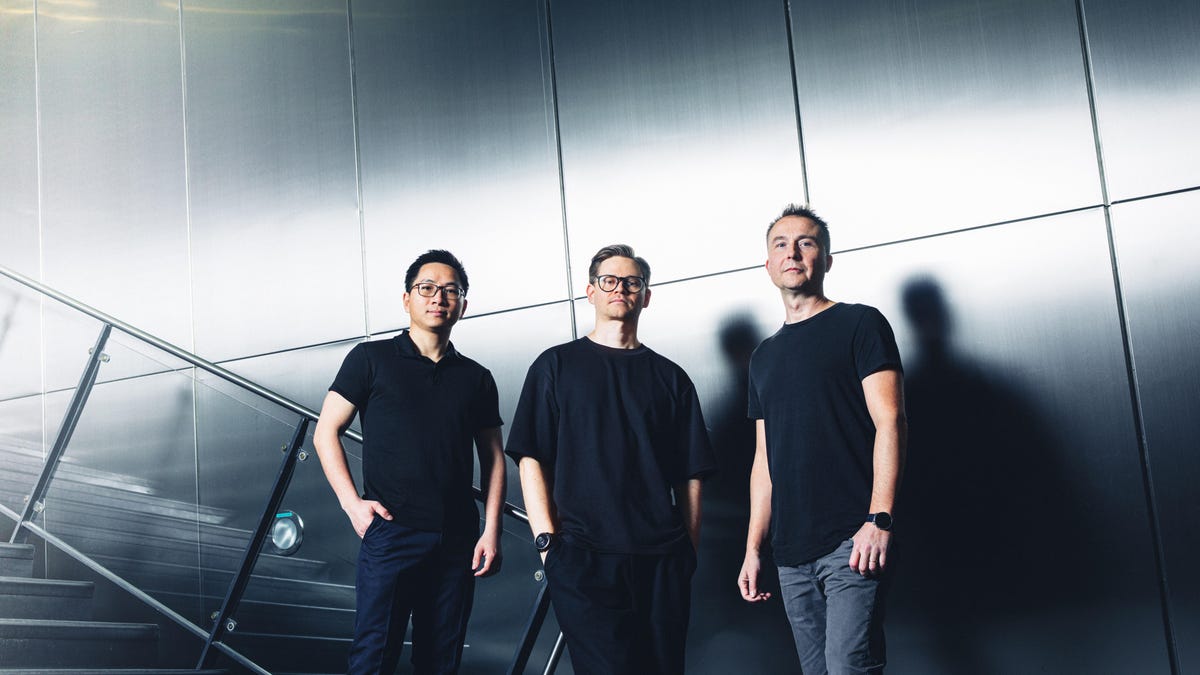
Many technology companies arrive at CES 2026 in Las Vegas, the world’s biggest tech show. They often make bold claims about the life-changing potential of their innovations, but it’s rare to see anything that actually lives up to the hype.
When you do see something truly special, on the other hand, it can seem like magic. That’s exactly how I felt when I experienced the wireless charging demo from Finnish company Willo, a deep-tech startup that’s just emerged from stealth mode.
«Seeing is believing,» Willo co-founder and President Marko Voutilainen tells me as I take a seat in a Las Vegas hotel suite to witness what the company hopes will be a revolution in wireless power. It could render the charging cables that rule our lives and clog up our drawers obsolete for good.
Wireless power has long posed a conundrum to tech companies. There needs to be perfect alignment between a device and the charger, which means that it’s often just as convenient to simply plug a cable into your phone. Wireless charging today feels like a half-baked solution.
The tech that Willo showed me doesn’t rely on charging pads, line of sight, directional targeting or even immediate proximity. Instead, it allows devices to be charged simply by existing within the force field of the power source.
The demo I’m being shown looks unassuming. They tell me I shouldn’t get caught up too much with the form factor of the power source — a simple gray-white cube. This isn’t a consumer device that’s for sale, merely a means to demonstrate the technology to me.
Willo CEO Hari Santamala picks up several receivers, black boxes shaped like phones with LEDs on the top. As he moves them to within 15 inches or so of the power source, the LEDs light up. He moves them around the cube, rotating them in different directions. The LEDs remain lit.
I’m seeing. I’m believing.
Making power cables the floppy disks of tomorrow
Unfortunately, I’m not allowed to take any pictures or videos. This week at CES, Willo is emerging from stealth mode to show the world what it can do, but it’s still playing its cards close to its chest.
The core technology is based on more than a decade of research by the company co-founder and CTO Nam Ha-Van. The company is claiming a number of world firsts with its wireless power tech, including the ability to rotate devices at any angle while charging, along with the ability to charge multiple devices at once.
Santamala talks me through his vision for how it would exist in the home. «You have to build the transmitter in a way that it’s kind of a natural part of your environment,» he says. «Ideally, we don’t see any of this,» he adds, gesturing to the cube.
You could sit on the sofa with your phone in your pocket, and it would be quietly charging while you watch TV. If you were working from home, you could move freely around your house with your laptop, never having to worry about plugging it in.
«We want to do to power cables, what floppy disks are to us today,» Voutilainen says. «They’re remnants of the past.»
It feels like the thing we’ve been waiting for — the way wireless charging was always supposed to be. So when can we expect to get it?
Willo is here at CES meeting journalists like me, but also the kind of partners it will need to adopt this technology and take it out into the world. Voutilainen and Santamala are cagey about their ideal strategy for doing this, but it feels like they’re hinting towards something open and large-scale. Comparisons to Wi-Fi and Bluetooth are thrown around.
«This can really change our everyday lives if introduced correctly in a very kind of open and driving-the-market-forward kind of way,» Santamala says. The company’s tech is «pretty ready» for industrialization, he adds — it just depends on their partners’ use cases and timelines.
I depart from the demo suite, hoping that what I’ve seen is as viable as I’ve been led to believe. Willo clearly thinks it has something special on its hands, and if the rest of the tech industry agrees, this might just be the first step toward a future free of charging cable fuss and inconvenience.

